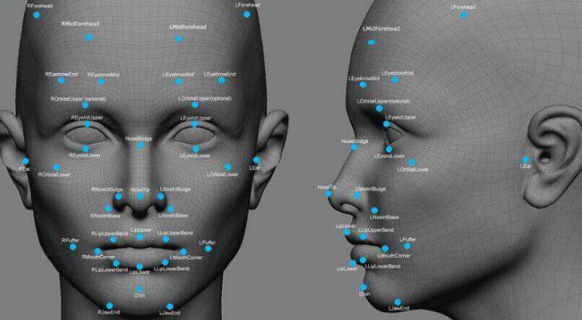
Fingerprint/face/iris Biometric skills explosion
2018-12-06
Core Tip: In terms of biometric identification itself, it can also be divided into fingerprint recognition, face recognition, iris recognition, palm/finger vein recognition. Various identification methods are applicable to different fields due to their respective characteristics.
Fingerprint recognition: easy and easy to operate, but there is a risk of being copied

As the name suggests, fingerprint recognition is to identify the identity by identifying the fingerprint path, because all the fingers do not have the same texture, so there is basically no probability of misidentification. At present, fingerprint identification is the most widely used method of security authentication. In public places, work or customs clearance can choose fingerprint punching.
After the rise of smart hardware, many personal authentication methods, including smartphones, also chose fingerprint recognition.
From a technical point of view, fingerprint recognition is mainly divided into three types: capacitive, optical and ultrasonic.
Among them, the ultrasonic recognition is still immature, and most of the fingerprint recognition chips mounted on mobile phones are capacitive fingerprint sensors. The mode of action is that after the fingerprint is collected through the surface mirror, the collected fingerprint is evaluated for quality, and the sample in the fingerprint library is compared, and the qualified information is finally determined.
Compared to other biometric technologies, fingerprints:
Advantages: 1, the most convenient, no discomfort; 2, fast recognition; 3, people generally do not decorate on the finger, stability and reliability; 4, easy to operate, no training; 5, safe and harmless ; 6, fingerprints are regenerative.
Disadvantages: 1. Touch type has high requirements on the environment, and has requirements for the humidity and cleanliness of the finger. Fingerprint wear can also cause unrecognizable consequences; 2. Some people may have no fingerprints by birth, or have few fingerprint features and cannot image; 3. Fingerprint traces are easy to retain, there is a possibility of being copied, and the security is lowered.
Face recognition: non-mandatory and guarded against deliberate camouflage

Compared with fingerprint recognition, face recognition uses more data and is more accurate. Moreover, unlike the fingerprints that need to be contacted, the face is identified by an empty space, and the verification of the specific matter is not required, and the verifier's attention is not required. This is also the reason why criminal suspects can be found at star concerts. In image recognition, automatic verification can be performed. This is the ability that contact recognition does not have.
As shown in the above figure, the face recognition technology is mainly carried out by extracting and comparing image features. First, the system performs similar search on the extracted feature image of the face image with the template stored in the database; then, by setting a threshold, the result exceeding the threshold is output; finally, the output feature is compared with the template, according to the degree of similarity Judging the identity of the face.
Compared to other biometric technologies, face recognition:
Advantages: 1. Non-mandatory and guarded against deliberate camouflage, users do not need to specially cooperate with face image acquisition, and obtain images in an unconscious state. On the one hand, there is no compulsory, on the one hand, conscious camouflage is avoided; 2. Non-contact The user does not need to directly contact the device to obtain the image, which is clean and hygienic, and avoids the possibility of contact with the disease; 3. Multiplicity, multiple people can be identified at the same time.
Disadvantages: 1. Faces can be camouflaged by makeup, facelifting, etc., which may not be recognized and reduce accuracy. 2. It is possible to pass images such as photos instead of my actual facial recognition, which has a large safety hazard. In the solution through 3D recognition; 3, in general, the recognition speed is slower than the fingerprint method.
Iris recognition: the ancient identification method is impossible to copy and modify

Even for young people who grew up in the late twentieth and early twenty-first centuries, iris recognition is a new term. Many people have heard in the past two years that smartphones have contributed to the concept of universal iris recognition. Designed and manufactured by Fujitsu, ARROWS NX F-04G is the world's first mass-produced smartphone with iris recognition technology, while Samsung uses iris recognition in Note 7 and later high-end flagships. At present, several domestic mobile phones also have this feature.
Because the concept is popular late, many people think that iris recognition is "new thing." But in fact, it is "a new bottle of wine." Compared with fingerprint recognition, the concept of iris recognition was born only five years later, and it has been 133 years since.
Specifically, the iris is an annular portion between the black pupil of the eye and the white sclera. It generally presents a radial structure from the inside to the outside, composed of rather complex fibrous tissue, containing many interlaced similarities. Detail features such as spots, filaments, crowns, stripes, crypts, etc., which were determined in a random combination before birth, once formed for life. The accuracy of iris recognition is the highest among various biometrics.
Iris recognition:
Advantages: 1. All biometrics have the advantage that the body's own functional organs will not have the forgotten attributes like passwords. 2. Like facial recognition, non-contact, users do not need to be in direct contact with the device to obtain The image is clean and hygienic, avoiding the possible contact infection of the disease; 3. Unlike the fingerprint and the face which are easy to modify and wear, the iris is inside the eye and is basically impossible to be copied and modified.
Disadvantages: 1. The miniaturization of hardware devices is not easy. The smart phone is already a very small device. 2. Compared with other biometric hardware, the iris recognition hardware has higher cost and is difficult to promote on a large scale. 3. The use convenience is poor. The recognition accuracy is slightly lower and the reaction speed is slower.
